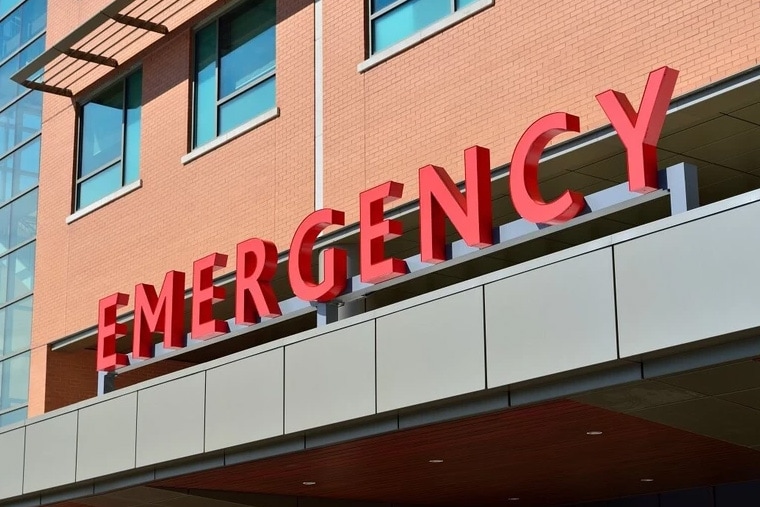An evidence-based, medically reviewed treatment plan for people with migraine who visit the emergency department for acute treatment.
Medically reviewed by Dr Pyari Bose MBBS, MD, FRCP (London), FRACP, Consultant Neurologist
Many of us with migraine disease end up at the emergency department (ED) at least once in our lives, especially if we’re struck with vomiting that means we can’t keep our regular medications in our stomachs. But the treatment we get can vary tremendously, depending on who we have the good (or bad) luck to see.
The migraine community in Aotearoa New Zealand would not be surprised by the findings of a study from Australia that checked out how well an ED in Melbourne did at adhering to national guidelines on the management of migraine. Although the guidelines recommend aspirin as the first-line treatment of mild migraine, paracetamol was much more likely to be prescribed than aspirin. Opioids are not recommended and yet nearly half of those presenting to the ED with headache were prescribed an opioid, which increased the amount of time they had to spend in the ED. Only 7% received a triptan, which is the most important targeted treatment for acute migraine available. A quarter of people received no guideline-recommended medications – not one.
Although we don’t have similar research from Aotearoa New Zealand, there is no reason to think that EDs here are doing any better.
What is going on?
The authors of this study coyly concluded the ‘failure of ED staff to follow guidelines is unexplained’. Basically, they don’t know why people presenting to ED with headaches are not getting recommended treatments but instead a hodgepodge of medications that are not helpful, and may be harmful.
We can hazard some guesses, though. The diagnosis and management of migraine makes up only a tiny sliver of medical training, which emphasises the recognition of potentially fatal neurological conditions – strokes, brain tumours, haemorrhages, meningitis. Although migraine is far more common, it gets far less attention. ED staff may not have much experience of migraine, they might not be aware of current guidelines for treatment, there may not even be a protocol for treatment at their department. Unless someone in the ED has an interest in migraine and makes the effort to audit and monitor how migraine is managed, they will not even know that the treatment they are prescribing is substandard.
What can we do?
We need to arm ourselves with information and be prepared to ask for treatment that is evidence-based and most likely to help us during a severe acute attack that lands us in the ED.
Here is what’s recommended (if there are no contra-indications to any of the medicines):
- An antiemetic (treatment for nausea and vomiting) given intravenously (IV, injected into a vein), such as metoclopramide, prochlorperazine or chlorpromazine. Note that this can be helpful even in the absence of vomiting.
- A triptan (specific migraine pain reliever), usually sumatriptan which can be given subcutaneously (injected into the skin) for people with nausea and vomiting so it can be absorbed without having to go through the stomach; otherwise it can be given orally. Unfortunately, this may not work as well as usual, as triptans are most effective when given early in the attack and if you’re at the ED, you’re probably past the early stage – but can still be worth trying, especially if you’ve had a partial response to an earlier dose.
- A non-steroidal anti-inflammatory (NSAID), either orally, by suppository (up the bottom) or by injection. The triptan and NSAID can be more effective when combined. If you’ve tried a NSAID and this hasn’t worked, taking another dose by a different route could still be beneficial.
- Dexamethasone (a steroid) can be offered to help prevent recurrence, especially when headaches have been prolonged and frequent.
IV fluids can be helpful if you’re dehydrated (although they’ll just make you pee a lot if you aren’t). Opioids should be avoided where possible, but can be a second-line, back-up option when nothing else is helping.
Another point worth knowing is that the treatment will be more successful if all of the needed medicines are given at once (what is known as stratified care). The approach of trying one medicine then adding another (stepwise care) is not the way to go.
It can be difficult to ask health professionals for what you need, especially in the middle of a migraine attack and in the ED, when the staff are usually strangers. If you can, enlist a support person to speak up for you. Make sure they’re aware of the American Headache Society Evidence Assessment – it’s hard to argue with the evidence. We’ve found it comforting to have a letter from our GP, explaining the severity of our migraine condition and what could be done to help if we ended up in the ED. Your GP or neurologist should be happy to provide you with this, to make sure you get the best care.
And let’s talk more about our experiences, share when things have gone well and when things could be improved, and make our voices heard. Let’s challenge the health profession to consistently give us treatments that are based on evidence, not any old medicine that hasn’t been shown to work. That is not respectful of us or our pain. We deserve better.
References
- Management of migraine in the Australian emergency department
- Management of adults with acute migraine in the emergency department: The American Headache Society evidence assessment of parenteral pharmacotherapies
- How to apply the AHS evidence assessment of the acute treatment of migraine in adults to your patient with migraine
- Treatment of acute migraine in the emergency department
- Acute treatment of migraine in adults


